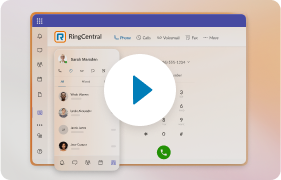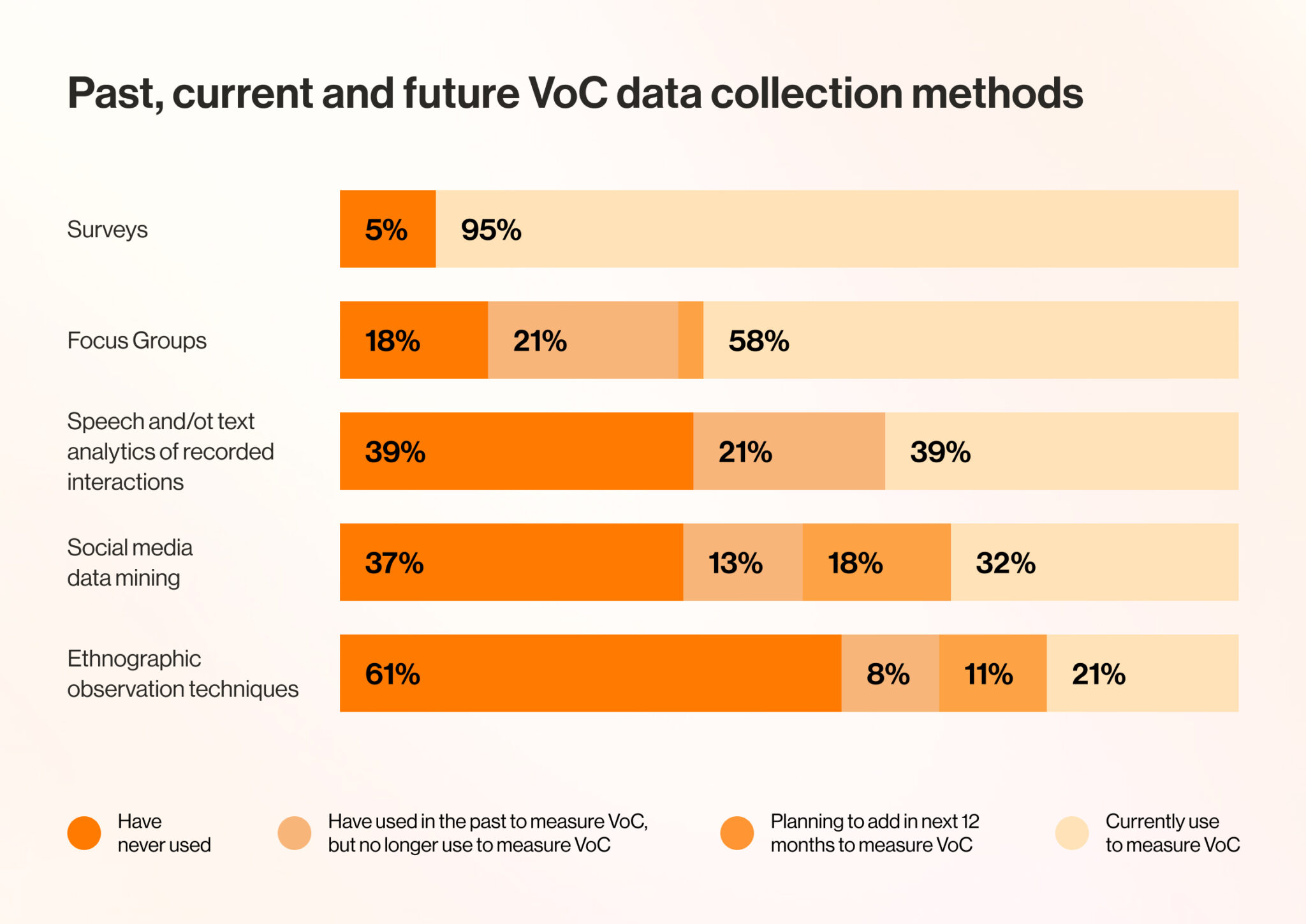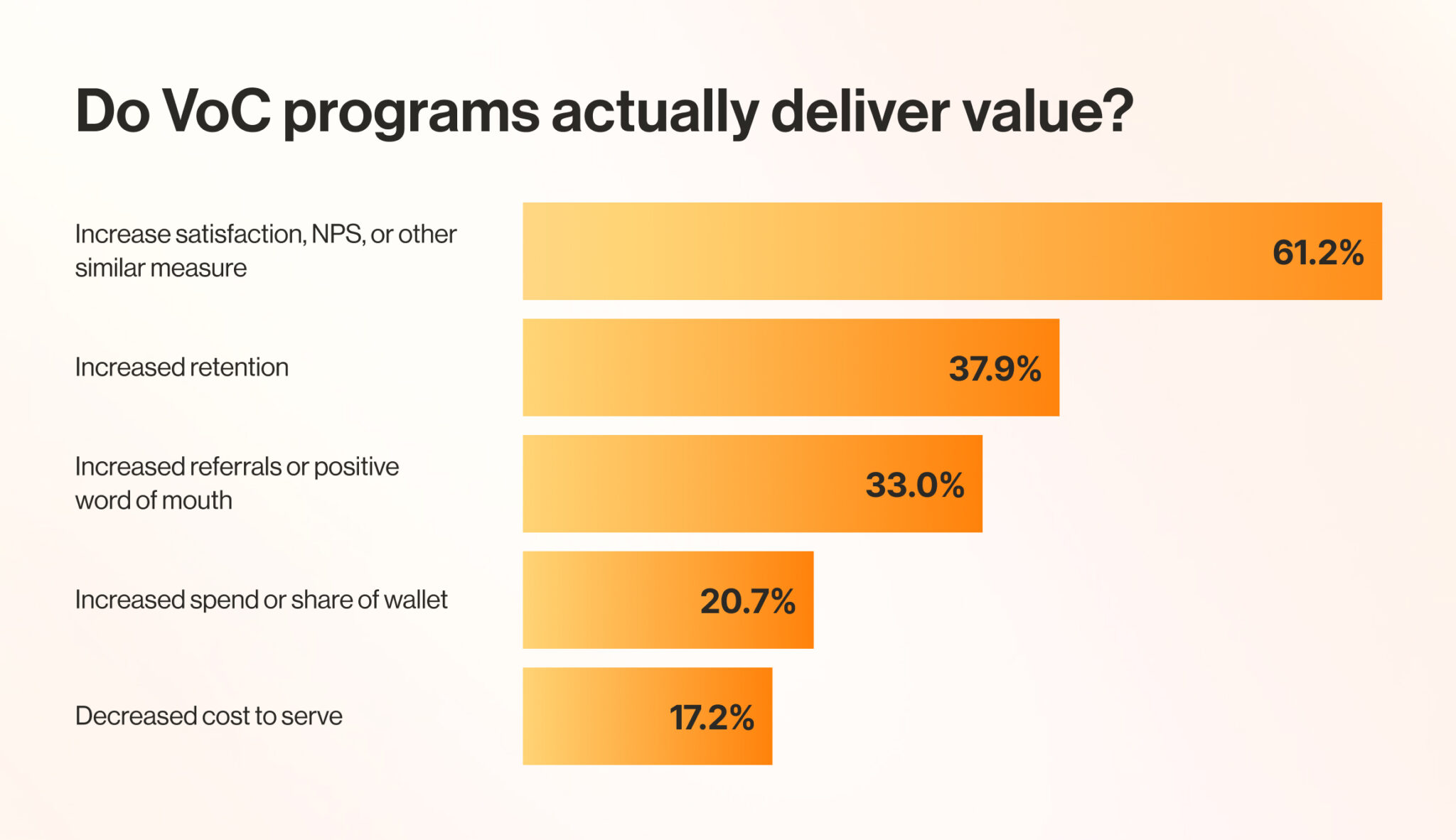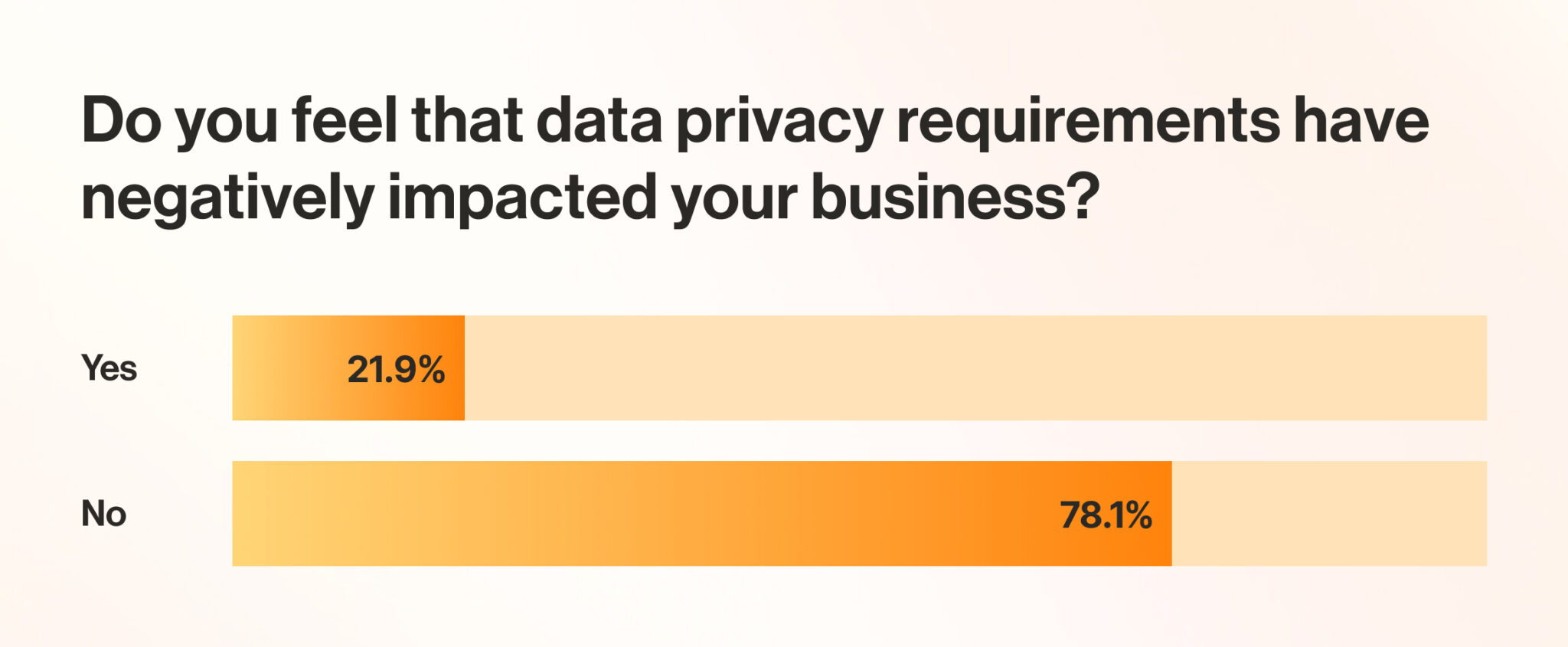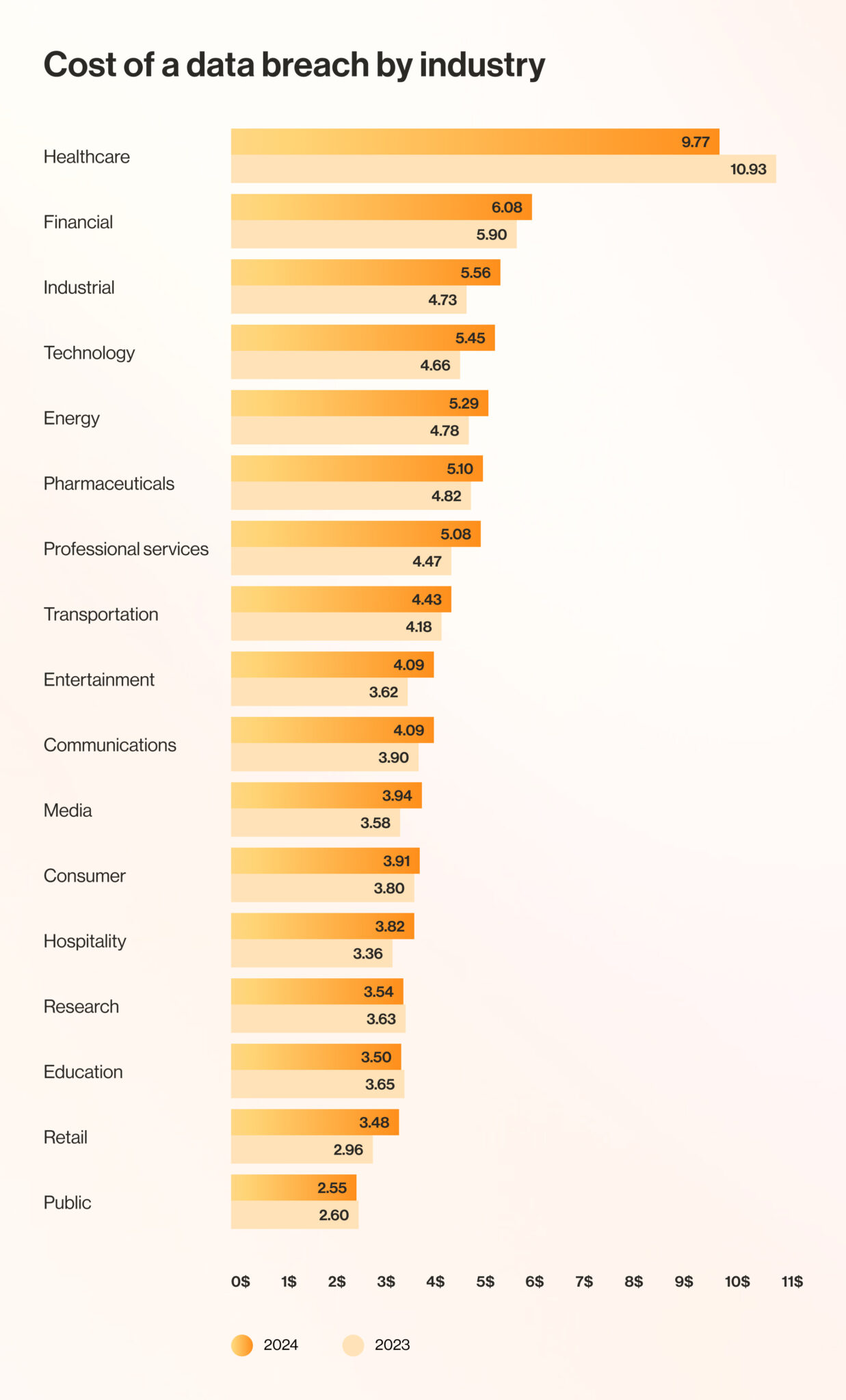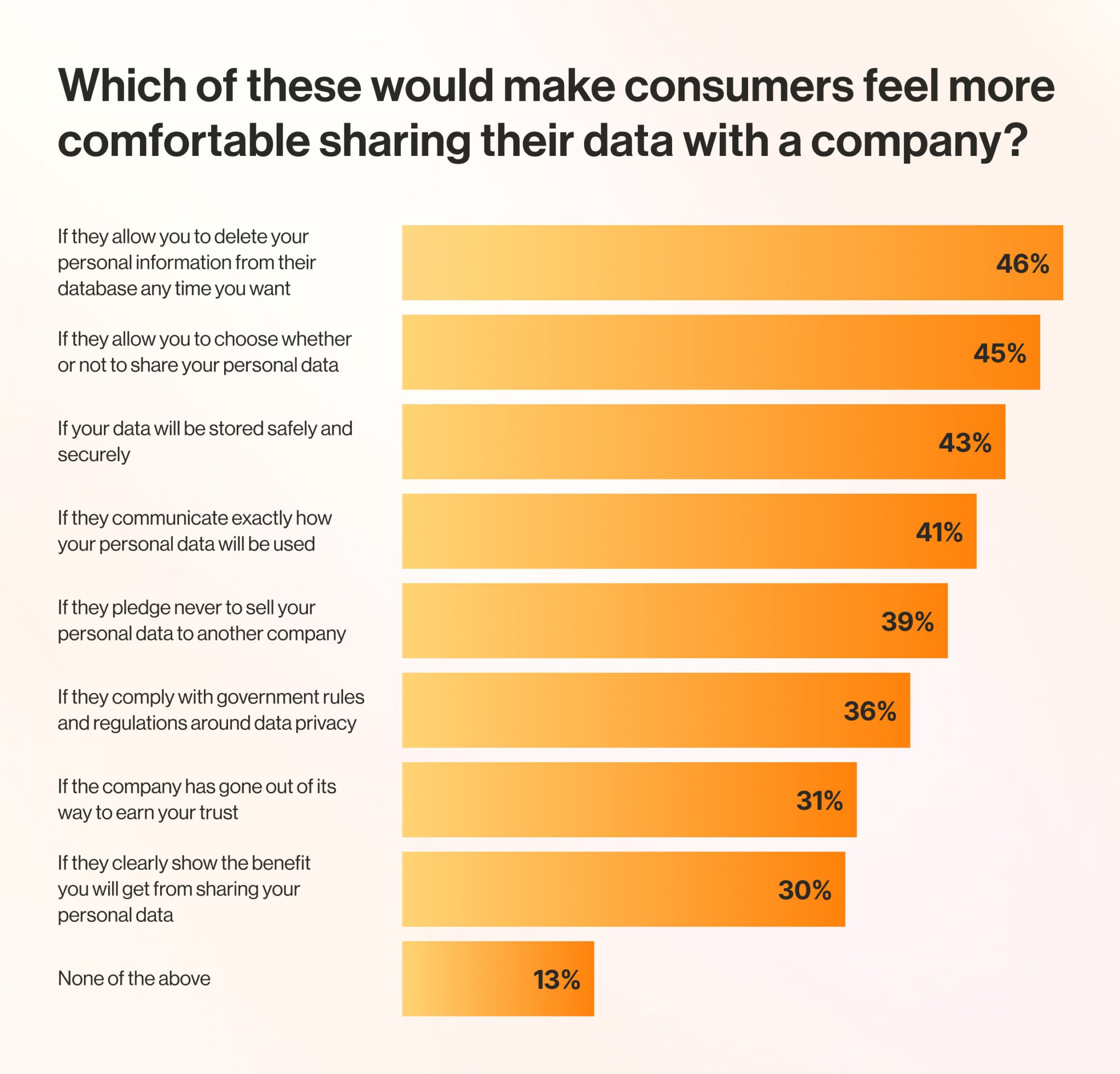Implementing a voice of the customer (VoC) strategy is crucial for businesses aiming to understand their customers’ expectations to drive business success.
However, because an effective VoC program relies on vast amounts of customer data, numerous security concerns can come into play.
This article will take a look at the benefits of a strong VoC strategy and how it must be balanced with safeguarding data to maintain customer trust.
What is voice of the customer (VoC)?
Voice of the customer refers to the process of gathering and analyzing customer feedback to understand their behavior, preferences, and pain points. A successful VoC program helps businesses align their products, services, and strategies with the needs of their target audience.
Collecting voice of the customer insights
VoC insights can be obtained using a wide range of methods. Here are just a few of the most popular approaches:
Post-call surveys
These customer satisfaction surveys allow businesses to collect VoC insights immediately after a customer service interaction. By asking open-ended questions and multiple-choice questions, organizations can gain deeper insights into customer sentiment and highlight areas for continuous improvement.
Speech analytics
Call center voice analytics can be used to analyze customer complaints and positive feedback to help businesses gain deep insights into customer sentiment. Artificial intelligence (AI) tools can transcribe and assess conversations in real time, identifying recurring issues and opportunities for VoC-driven improvements.
CRM tools
Customer relationship management (CRM) tools store and manage customer data, including interactions with customer services. CRM platforms can, therefore, provide an overview of the customer journey and potentially highlight ways to improve customer retention.
IVR systems
Interactive voice response (IVR) systems help collect customer feedback efficiently, conducting automated surveys after a call. This reduces the burden on human agents. IVR surveys allow businesses to capture real-time insights from customers directly after a call, leading to more responsive VoC programs.
What makes voice of the customer so important?
A strong voice of the customer strategy can benefit small businesses and large enterprises alike.
Improved customer satisfaction
By analyzing customer feedback channels, businesses can take action on customer feedback to try to enhance their customer satisfaction scores. This ultimately leads to higher customer loyalty and a stronger customer base.
Understanding customer concerns means that business decisions are well-informed, and products, services, and the overall customer experience can be refined to tackle the specific needs of the customer.
Improved sales
VoC insights don’t just improve customer retention, they also help businesses refine their marketing strategies. This helps attract new customers, including high-quality B2B leads, who resonate with the brand’s offerings.
Businesses can use VoC feedback to fine-tune messaging, ensuring it aligns with the needs and expectations of potential B2B buyers. Analyzing customer sentiment and customer behavior through speech analytics and CRM tools can also provide actionable insights for B2B leads generation.
Boosted agent engagement
By understanding how their behaviors and actions impact customers, employees are better positioned to deliver exceptional experiences.
Providing agents with real-time insights into customer interactions allows them to adjust their approach and improve communication. VoC insights can also strengthen training, coaching, and development programs.
Common challenges businesses face with VoC implementation
Implementing a voice of the customer program also comes with its own set of challenges.
Privacy and security challenges
Another significant challenge is ensuring compliance with privacy regulations while handling customer data. Laws such as GDPR and CCPA impose strict requirements on businesses, making it necessary to develop a secure VoC strategy that balances insight collection with legal obligations.
However, the vast majority of businesses remain confident that they can balance data collection with their customers’ privacy.
Gathering actionable insights
Feedback from customers must be analyzed effectively in order to drive business improvements, which can be time-consuming. Without a structured approach, businesses may struggle to extract meaningful data, making it difficult to implement necessary changes.
Customer participation
Encouraging customer participation is another key challenge. Many customers may not be inclined to provide feedback unless there’s an incentive or an easy, seamless process in place.
The importance of collecting data securely
Collecting customer data is essential for an effective voice of the customer (VoC) strategy, but businesses must prioritize security to maintain trust and comply with regulations.
Customers expect their personal information to be handled responsibly, and failure to do so can result in reputational damage, financial penalties, and customer churn.
Foster customer loyalty
Data privacy is a fundamental aspect of building trust with customers and improving their overall experience. When customers believe their personal information is secure, they’re more likely to engage with a business and remain loyal over the long term.
Studies show that a large percentage of customers would cease doing business with a company if they felt their sensitive information was compromised.
Ethical handling of data, i.e., ensuring it’s not misused or accessed without authorization, further reinforces this trust and strengthens customer relationships.
Build a strong reputation
Beyond fostering loyalty, prioritizing data protection plays a significant role in a company’s reputation. Data breaches can result in reputational damage and lost business opportunities.
Mishandling data can lead to a loss of trust and customer churn. By making data security an integral part of customer engagement strategies, businesses can safeguard their reputation while creating a secure and positive customer experience.
Adhere to rules and regulations
Compliance with local regulations ensures businesses avoid legal risks while protecting customer success and data integrity. Laws like GDPR and CCPA require businesses to manage customer insights responsibly to avoid penalties and maintain business success.
Both GDPR and CCPA grant consumers rights such as data access, correction, deletion, and consent withdrawal. These laws also mandate that businesses maintain transparency by providing clear privacy policies.
Secure practices to follow when implementing voice of the customer
By implementing secure data collection practices, companies can protect their customers’ sensitive information while still gaining valuable insights to enhance the customer experience and drive business growth. Here are some best practices to follow to ensure the process runs smoothly:
1. Set objectives
Defining clear goals for your VoC program is crucial to ensure a structured approach to collecting and analyzing VoC feedback. Aligning your business goals with customer insights helps drive meaningful VoC efforts and ensures your program delivers actionable insights.
2. Implement a data governance strategy
A strong data governance strategy ensures the secure handling of customer data and prevents unauthorized access. This includes defining policies for data anonymization, encryption, and secure storage.
By enforcing stringent policies on collecting, storing, and analyzing data, businesses can enhance their VoC-driven improvements while maintaining compliance with privacy laws and industry regulations.
3. Train employees
Training employees on VoC efforts and data security best practices is essential to maintaining customer trust. Employees should understand feedback collection techniques, privacy laws, and how to handle channels such as a customer feedback survey securely.
4. Only collect necessary data
To minimize security risks, businesses should limit VoC data collection to only essential information. Collecting excessive customer input increases exposure to potential data breaches and privacy concerns.
5. Be transparent
Transparency about how VoC data is used fosters trust and encourages customers to share honest feedback. Companies should clearly communicate their VoC strategy, explaining how collected insights contribute to product roadmaps and customer solutions.
Providing customers with control over their data, such as offering opt-in and opt-out options, further reinforces ethical data collection practices. Clear privacy policies should be accessible to customers, explaining how feedback collection efforts align with security best practices.
6. Securely store data
Businesses should adopt security practices such as cloud-based security solutions, multi-factor authentication, and regular data backups to prevent data loss.
7. Implement access controls
Restricting access to customer feedback data to only key stakeholders is essential for preventing security breaches. Businesses should use role-based access controls (RBAC) to ensure that only authorized personnel can view, edit, or analyze customer insights.
8. Conduct regular audits and compliance checks
Audits should be conducted periodically to review feedback collection processes, update VoC-driven improvements, and identify potential security gaps that need to be addressed proactively. Frequent security audits help businesses identify vulnerabilities and ensure adherence to VoC feedback security policies.
9. Continuously improve
A successful VoC program requires continuous monitoring, iteration, and adaptation to emerging security challenges. Businesses should analyze customer feedback channels, adopt VoC stakeholder buy-in, and integrate the latest security solutions to stay ahead.
Strengthening customer trust through a secure VoC strategy
A secure voice of the customer strategy helps businesses gain insights into customer needs while simultaneously maintaining trust and regulatory compliance.
By following best practices such as feedback collection, data security, and continuous improvement, companies can enhance their customer satisfaction, improve their customer retention rate, and drive long-term success.
FAQs
Which channels should I collect VoC data from?
Businesses should collect VoC insights from as many channels as possible. This could include customer surveys, online reviews, customer interviews, social media, call centers, and customer service teams.
How can I ensure my VoC program complies with data privacy regulations?
Ensure compliance by following laws such as GDPR and CCPA, obtaining explicit consent for data collection, being transparent about how data is used, and implementing security measures like encryption and access controls. Regular audits and employee training on data privacy best practices are also essential.
What are the best tools for collecting VoC data securely?
CRM tools, speech analytics, IVR systems, and survey tools can help collect VoC insights while maintaining security. To protect customer data, choose platforms that offer encryption, anonymization, and compliance with data privacy regulations.
How can I encourage more customers to provide feedback?
Offer incentives, simplify survey questions, personalize requests, and use multiple customer feedback channels (e.g., emails, in-app surveys, and social media). Ensuring that customers see improvements based on their feedback also boosts participation.
What role does artificial intelligence (AI) play in VoC analytics?
AI-driven speech analytics and predictive analytics help identify trends, detect customer sentiment, and provide deep insights from customer interactions. AI can also automate feedback analysis, making it easier to extract valuable insights from large datasets.
Updated Jul 18, 2025
